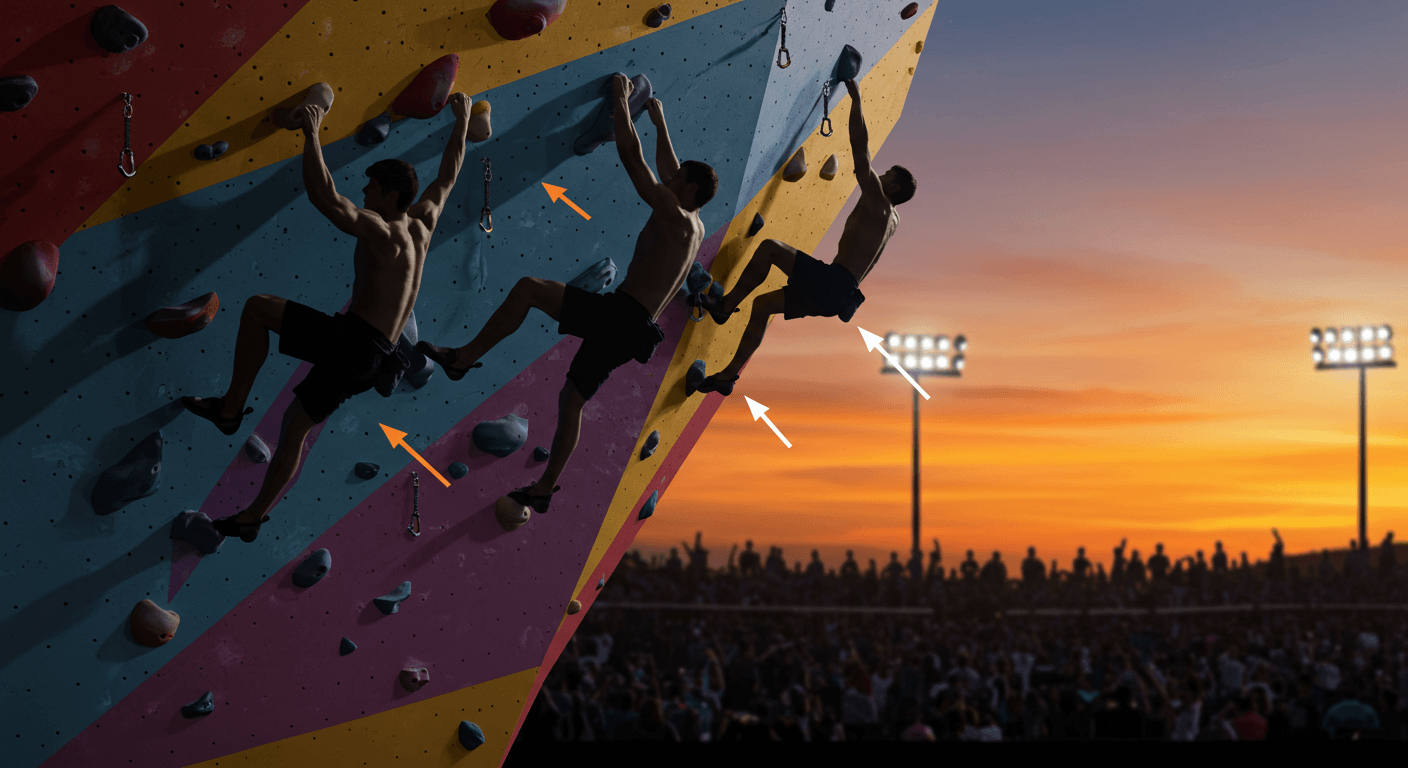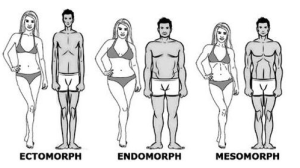Climbing may seem like a sport where only lean, wiry bodies dominate—but step into the Olympic world, and you’ll see something different. From explosive boulderers to endurance-driven lead climbers, athletes show up in all shapes and sizes.
In the 2020 Tokyo Olympics, the combined format was introduced for the first time. What makes the Olympic Combined format especially interesting is how it brings together three distinct disciplines—speed, bouldering, and lead—and puts every athlete through them all.
So, how do climbers with different physiques perform in this competition? That’s what we’ll explore in this guide. Whether you’re a climber yourself, a fan, or just curious, this blog breaks down how different bodies rise (literally) to the Olympic challenge.
What’s the Olympic Combined Format?
Before we talk about body types, let’s quickly cover how the combined event works.
The Sport Climbing Combined event includes:
- Speed Climbing – a race up a standardized 15-meter wall
- Bouldering – short, technical climbs on overhanging walls without ropes
- Lead Climbing – a single, tall route climbed with a rope for height and endurance
Athletes must compete in all three, and their final score is the product of their ranks in each discipline. That means a climber who finishes 1st, 5th, and 3rd would get a score of 15. The lower the score, the better.
Because each discipline favors different physical attributes, body type can affect an athlete’s performance in very different ways.
How Body Types Influence Performance in Sport Climbing Combined
In Olympic sport climbing, athletes need to compete in all three disciplines: speed, bouldering, and lead. Each body type brings its own strengths and challenges. Here’s a look at how different physiques tend to perform—and adapt—within this demanding format.
1. Ectomorphs
Ectomorphs are usually lean, have low body fat, and have longer limbs. This makes them well-suited for climbing, especially when it comes to endurance and technique.
Where They Excel:
- Lead Climbing: Their lightweight helps with long endurance routes.
- Bouldering: Long reach can help on stretched-out problems.
Challenges in Speed:
They often lack explosive power, which can make fast starts and quick bursts harder. However, with the right training—like plyometrics and power drills—many ectomorphs build enough strength to compete well across all events.
2. Mesomorphs
Mesomorphs are naturally muscular with balanced limbs and solid overall strength. This gives them a big edge in explosive movements and power-based climbs.
Where They Excel:
- Speed Climbing: Strong legs and arms support fast, dynamic moves.
- Bouldering: They shine on powerful, steep routes.
Challenges in Lead:
Their extra muscle mass can make longer climbs more tiring. But with good pacing, breathing, and endurance training, mesomorphs can manage well across all three formats.
3. Endomorphs
Endomorphs tend to carry more body fat, build muscle easily, and have shorter limbs. While less common in elite-level climbing, this build still has value, especially when paired with smart training.
Where They Might Excel:
- Bouldering: Strength-focused problems suit their powerful build.
- Speed Climbing: Explosive power can still give them a solid edge.
Challenges in Lead and Bouldering:
More weight can make it harder to hold small holds or stay light on the wall. Flexibility might also be tougher. But climbers with this build can still perform well with excellent technique, core stability, and movement efficiency.
The Role of Height and Wingspan
Aside from body type, height and reach also matter in climbing.
Taller Climbers (Over 6’ or 183 cm):
- Pros: Greater reach can be a massive advantage, especially in lead and bouldering.
- Cons: Longer limbs mean more weight to move and greater leverage—this can cause strain on holds.
Shorter Climbers (Under 5’6” or 167 cm):
- Pros: Often more compact and efficient on the wall. Smaller body means less weight and better balance.
- Cons: Can struggle with reach-dependent problems or far-apart holds.
In speed climbing, height can be a double-edged sword. Longer legs help cover ground faster, but precise foot placement matters even more.
In the Tokyo Olympics, we saw a mix: Alberto Ginés López, the men’s gold medalist, is about 5’6”. Janja Garnbret, the women’s gold medalist, is 5’4”. Both are proof that it’s not about being tall or short—it’s about maximizing your own build.
Professional Olympic Climbers and Their Body Types
To put theory into perspective, let’s take a quick look at how different Olympians have leveraged their body types.
Adam Ondra (Czech Republic)
- Tall (6’1”) with long arms and legs
- Dominates in lead climbing with efficient, static movement.
- Struggled slightly in speed due to longer limbs and slower acceleration.
Janja Garnbret (Slovenia)
- Compact, lean, and explosively powerful
- Known for her dynamic bouldering style and unbeatable lead performance.
- Her balanced build has made her a dominant all-rounder.
Tomoa Narasaki (Japan)
- Shorter and highly muscular
- Excels in explosive bouldering and fast, precise speed runs.
- Has refined his endurance to stay competitive in the lead.
Training to Compete Across Body Types
No matter your body type, success in the Combined format comes down to training. Athletes must tailor their workouts to strengthen weaknesses and refine movement styles.
Here’s how different climbers adapt:
|
Body Type |
Common Strengths | Challenges | Training Focus |
|
Tall |
Reach and long moves | Speed and tight holds | Focus on explosive power and core |
| Short | Tighter body control | Reaching far moves |
Train flexibility and dynamic reach |
|
Heavier |
Raw strength | Endurance and lead climbing |
Build stamina and refine movement |
| Lean | Endurance and agility | Powerful boulder moves |
Add strength and power training |
Tips for Training Based on Body Type
If you’re training for climbing—whether recreationally or for competition—it helps to know your natural build. That way, you can work with it, not against it.
For Lean/Ectomorph Builds:
- Prioritize explosive power training (campus board, plyometrics)
- Work on core control for dynamic problems
- Don’t ignore speed—you can train to move faster
For Muscular/Mesomorph Builds:
- Focus on endurance training for lead
- Add mobility and flexibility work to stay efficient
- Keep muscle weight in check to avoid unnecessary fatigue
For Broader/Endomorph Builds:
- Prioritize fat-to-muscle ratio improvement
- Emphasize technique and body positioning
- Use raw power to your advantage on overhangs and short problems
Regardless of your body type, the best climbers are those who train smart and understand their own strengths and limits.
Conclusion
Sport climbing, especially in the Olympic Combined format, is a game of balance—between strength and strategy, reach and movement, power and control. That’s what makes it beautiful. No single body type wins it all. The best climbers are those who understand their own bodies and train accordingly.
So, whether you’re tall and lanky or compact and strong, there’s a space for you in climbing. With the right focus, you can play to your strengths and climb higher than you ever thought possible.








